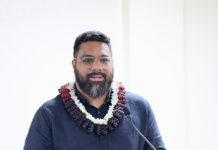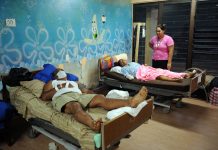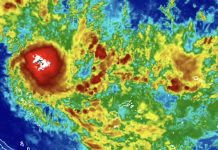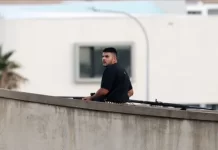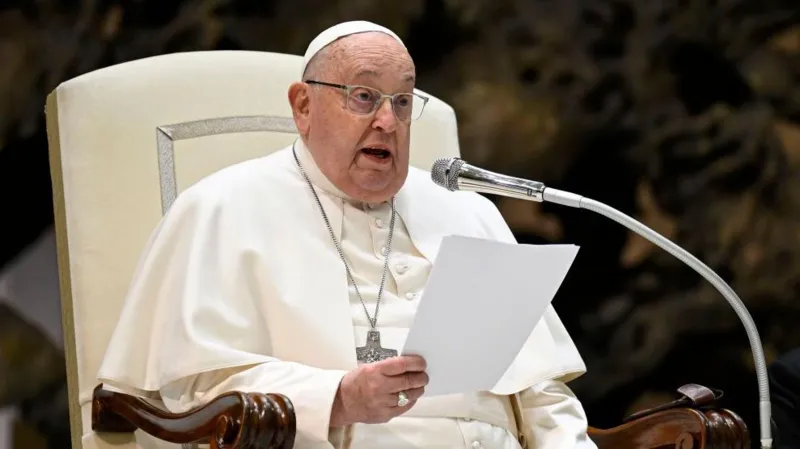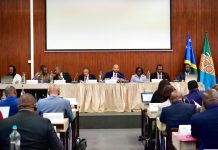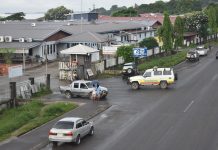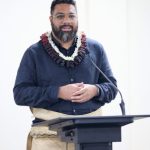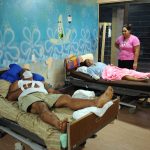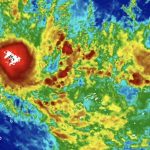Pope Francis, history’s first Latin American pontiff who charmed the world with his humble style and concern for the poor but alienated conservatives with critiques of capitalism and climate change, died Monday. He was 88.
The Vatican said Francis died of a stroke that put him into a coma and led to heart failure.
Bells tolled in Catholic churches from his native Argentina to the Philippines and across Rome as news spread around the world.
“At 7:35 this morning (Easter Monday), the Bishop of Rome, Francis, returned to the home of the Father. His entire life was dedicated to the service of the Lord and of his Church,” Cardinal Kevin Farrell said from the chapel of the Domus Santa Marta, where Francis lived.
Francis, who suffered from chronic lung disease and had part of one lung removed as a young man, was admitted to Gemelli hospital on 14 Feb, 2025, for a respiratory crisis that developed into double pneumonia. He spent 38 days there, the longest hospitalisation of his 12-year papacy.
He made his last public appearance on Easter Sunday — a day before his death — to bless thousands of people in St. Peter’s Square, drawing wild cheers and applause. Beforehand, he met U.S Vice President JD Vance.
Francis performed the blessing from the same loggia where he was introduced on 13 March 2013, as the 266th pope.
From his first greeting that night — a remarkably normal “Buonasera” (“Good evening”) — to his embrace of refugees and the downtrodden, Francis signaled a very different tone for the papacy, stressing humility over hubris for a Catholic Church beset by scandal and accusations of indifference.
The Argentine-born Jorge Mario Bergoglio brought a breath of fresh air into a 2,000-year-old institution that had seen its influence wane during the troubled tenure of Pope Benedict XVI, whose surprise resignation led to Francis’ election.
But Francis soon invited troubles of his own, and conservatives grew increasingly upset with his progressive bent, outreach to LGBTQ+ Catholics and crackdown on traditionalists. His greatest test came in 2018 when he botched a notorious case of clergy sexual abuse in Chile, and the scandal that festered under his predecessors erupted anew.
And then Francis, the crowd-loving, globe-trotting pope of the peripheries, navigated the unprecedented reality of leading a universal religion through the coronavirus pandemic from a locked-down Vatican City.
“We have realised that we are on the same boat, all of us fragile and disoriented,” Francis told an empty St. Peter’s Square in March 2020. Calling for a rethink of the global economic framework, he said the pandemic showed the need for “all of us to row together, each of us in need of comforting the other.”
World leaders on Monday extolled Francis’ commitment to the marginalised. French President Emmanuel Macron, whose country is largely Catholic, wrote on X: “From Buenos Aires to Rome, Pope Francis wanted the church to bring joy and hope to the poorest. … May this hope forever outlast him.”
Flags flew at half-staff in Italy, and crowds gathered in St. Peter’s Square. When the great bells of St. Peter’s Basilica began tolling, tourists stopped in their tracks to record the moment on their phones.
Johann Xavier, who travelled from Australia, hoped to see the pope during his visit. “But then we heard about it when we came in here. It pretty much devastated all of us,’’ he said.
Francis’ death sets off a weekslong process of allowing the faithful to pay their final respects, first for Vatican officials in the Santa Marta chapel and then in St. Peter’s for the general public, followed by a funeral and a conclave to elect a new pope.
As the sun was setting on Monday evening, the Vatican held a Rosary prayer in St Peter’s Square in its first public commemoration.
In his final will, Francis confirmed he will be buried in St. Mary Major Basilica in a simple underground tomb with only “Franciscus” written on it. The basilica, which sits outside the Vatican, is home to Francis’ favorite icon of the Virgin Mary, to whom Francis was particularly devoted.
Born 17 December 1936, in Buenos Aires, Jorge Mario Bergoglio was the eldest of five children of Italian immigrants.
He credited his devout grandmother Rosa with teaching him how to pray. Weekends were spent listening to opera on the radio, going to Mass and attending matches of the family’s beloved San Lorenzo soccer club. As pope, his love of soccer brought him a huge collection of jerseys from visitors.
He said he received his religious calling at 17 while going to confession, recounting in a 2010 biography that, “I don’t know what it was, but it changed my life. … I realised that they were waiting for me.”
He entered the diocesan seminary but switched to the Jesuit order in 1958, attracted to its missionary tradition and militancy.
Around this time, he suffered from pneumonia, which led to the removal of part of his right lung. His frail health prevented him from becoming a missionary, and his less-than-robust lung capacity was perhaps responsible for his whisper of a voice and reluctance to sing at Mass.
On 13 December, 1969, he was ordained a priest, and immediately began teaching. In 1973, he was named head of the Jesuits in Argentina, an appointment he later acknowledged was “crazy” given he was only 36. “My authoritarian and quick manner of making decisions led me to have serious problems and to be accused of being ultraconservative,” he admitted in his Civilta Cattolica interview.


